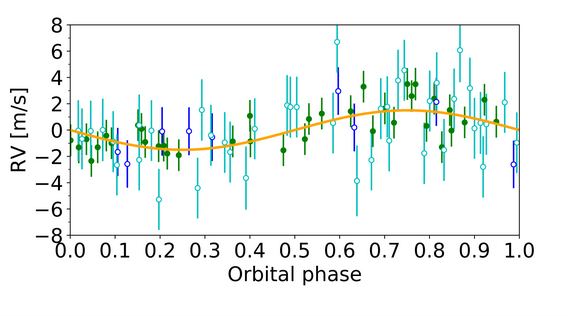
Mario Damasso Post-Doc INAF-OATo
Thanks to observations collected with ESPRESSO on 37 nights and within a time span of ~200 days, we characterized the bright star π Men and its multi-planet system through a high-precision radial velocity (RV) follow-up (reaching a precision of 10 cm/s per measurement), complemented by a precise multi-technique characterization. The system is composed of a transiting super-Earth (π Men c) discovered by TESS at ∼0.07 au from the host star, and a sub-stellar companion (π Men b) on a ∼2 100-day eccentric orbit. We improved the ephemeris of π Men c using 18 unpublished TESS transits, and in combination with astrometric measurements with Hipparcos and Gaia, we determined the inclination of the orbital plane of π Men b with high precision (45.8 +1.4 −1.1 deg). This allowed us to precisely measure the absolute mass mb = 14.1 +0.5 −0.4 MJup, revealing that π Men b can be classified as a brown dwarf, and to realize that the two planetary orbital planes are highly misaligned. Moreover, the ESPRESSO RVs revealed the presence of a third signal with a period of ~190 d, possibly due to an additional super-Earth in the system. This detection must be confirmed in the future with additional high-precision measurements.
π Men represents a nice example of the extreme precision radial velocities that can be obtained with ESPRESSO for bright targets. The determination of the 3-D architecture of the planetary system, in particular the high relative misalignment of the orbital planes of planets b and c, put constraints and challenges to the theories of the formation and dynamical evolution of planetary systems.
Our study has been accepted for publication on Astronomy & Astrophysics. The pre-print is available on https://arxiv.org/abs/2007.06410

Spectroscopic orbit of π Men c – ESPRESSO data are in green; the HARPS archive data used in the study are in blue and light blue (Courtesy Dammasso/Sozzetti INAF-OATo)
